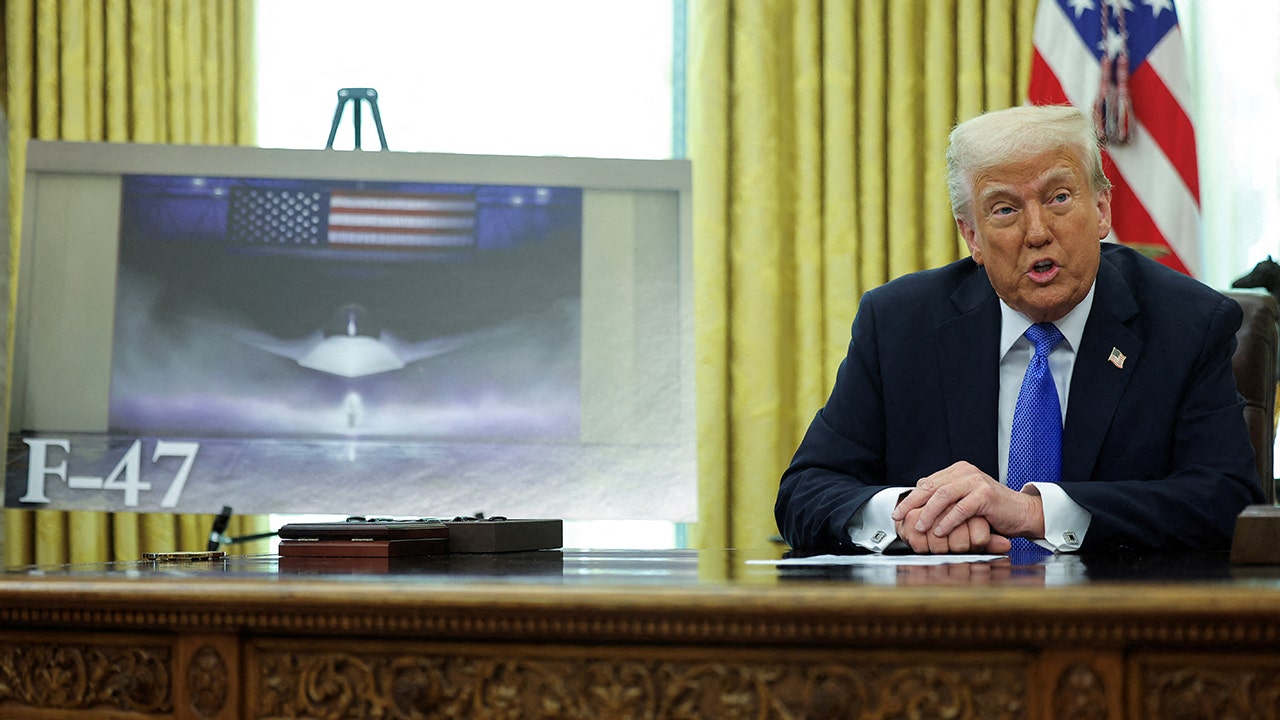Boeing's F-47: A New Era for the USAF? Exploring the Next-Generation Fighter Jet
The skies may soon see a new dominant force. Boeing is reportedly developing the F-47, a next-generation fighter jet designed to meet the evolving needs of the United States Air Force (USAF). While official details remain scarce, leaked information and industry speculation paint a picture of a revolutionary aircraft poised to redefine air superiority. This article delves into what we know (and what we don't) about the potential capabilities and implications of the F-47.
Unveiling the F-47: Speculation and Leaks
The existence of the F-47 program remains largely unconfirmed by Boeing or the USAF. However, numerous reports from defense industry analysts and leaked documents suggest an ambitious project underway, focusing on several key areas:
Next-Generation Stealth Technology
One of the most discussed aspects of the F-47 is its potential for advanced stealth capabilities. Experts speculate that Boeing is incorporating cutting-edge materials and designs to minimize the aircraft's radar signature, making it significantly harder to detect by enemy radar systems. This includes potentially revolutionary advancements in:
- Plasma Stealth: Utilizing plasma to deflect radar waves.
- Metamaterials: Employing materials with unique electromagnetic properties.
- Advanced Shape Optimization: Designing the airframe to minimize radar reflections.
Enhanced Sensor Fusion and AI Integration
The F-47 is expected to leverage advanced sensor fusion technology, integrating data from various sources – radar, infrared, electronic warfare systems – to provide pilots with a comprehensive and real-time situational awareness. Artificial intelligence (AI) is likely to play a crucial role in processing this vast amount of information, assisting pilots in decision-making and enhancing targeting accuracy.
Hypersonic Capabilities?
The most intriguing, and currently unconfirmed, speculation surrounds the potential for hypersonic flight capabilities in the F-47. While unlikely to be a purely hypersonic vehicle, the integration of hypersonic weapons or the ability to reach hypersonic speeds for short bursts could dramatically alter the rules of air combat.
The F-47 in the Context of USAF Modernization
The development of the F-47, if confirmed, aligns with the USAF's broader modernization strategy. The service is actively seeking to replace aging fleets and maintain its technological edge in a rapidly evolving geopolitical landscape. The F-47 could potentially complement or even replace existing platforms like the F-22 Raptor and F-35 Lightning II, offering superior capabilities in certain areas.
Challenges and Uncertainties
Despite the excitement surrounding the F-47, several challenges remain. The development of such advanced technology is incredibly expensive and complex, requiring substantial investment and overcoming numerous technological hurdles. Furthermore, the integration of AI and hypersonic capabilities raises ethical and operational considerations that need careful assessment.
The Future of Air Superiority: What's Next?
The F-47 represents a potential leap forward in fighter jet technology, but much remains uncertain. While official confirmation is awaited, the leaked information suggests a potentially transformative aircraft that could significantly shape the future of air combat. Further updates and official announcements from Boeing and the USAF will be crucial in confirming these speculations and providing a clearer picture of the F-47's capabilities and role in the future of the USAF. Keep an eye on reputable defense news sources for the latest developments.
Keywords: F-47, Boeing, USAF, Fighter Jet, Next-Generation Fighter, Stealth Technology, Hypersonic, AI, Sensor Fusion, Air Superiority, Military Technology, Defense News, Aviation
(Note: This article is based on speculation and leaked information. No official confirmation of the F-47 program exists at this time.)
